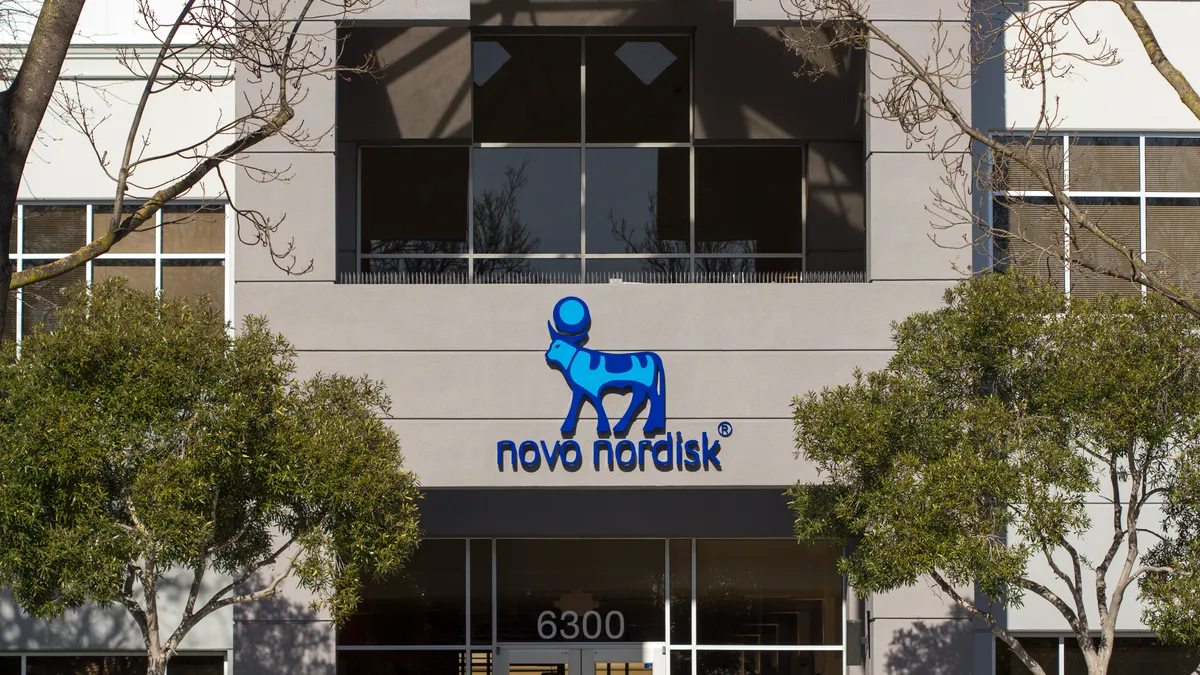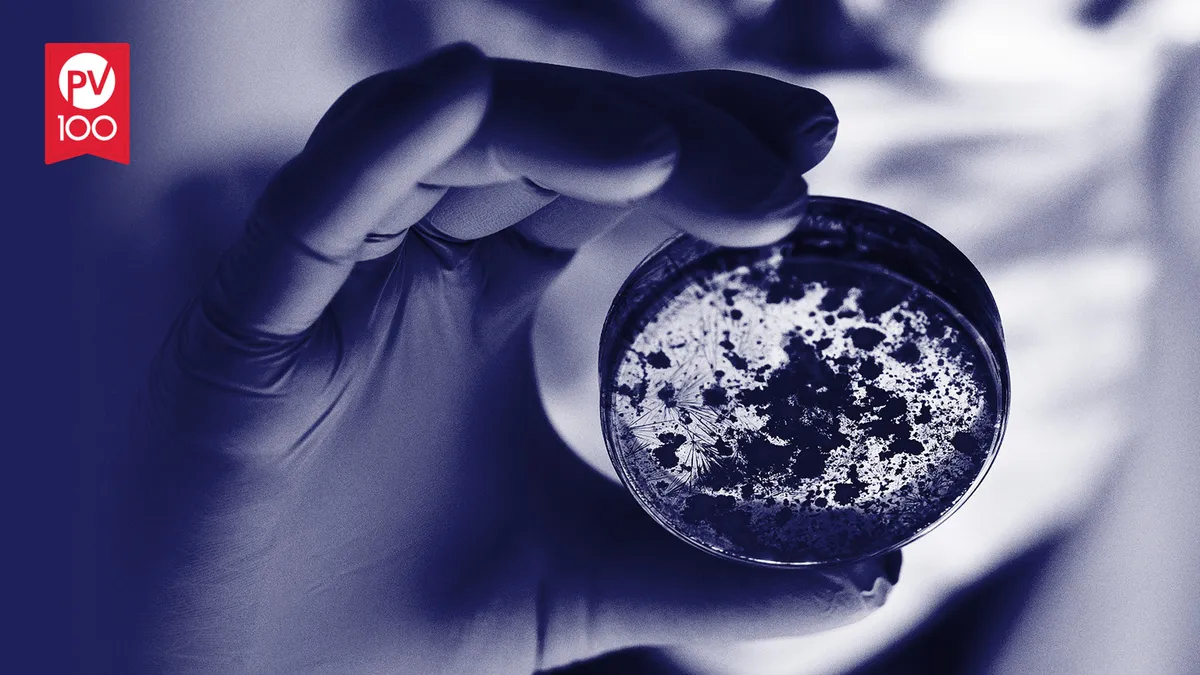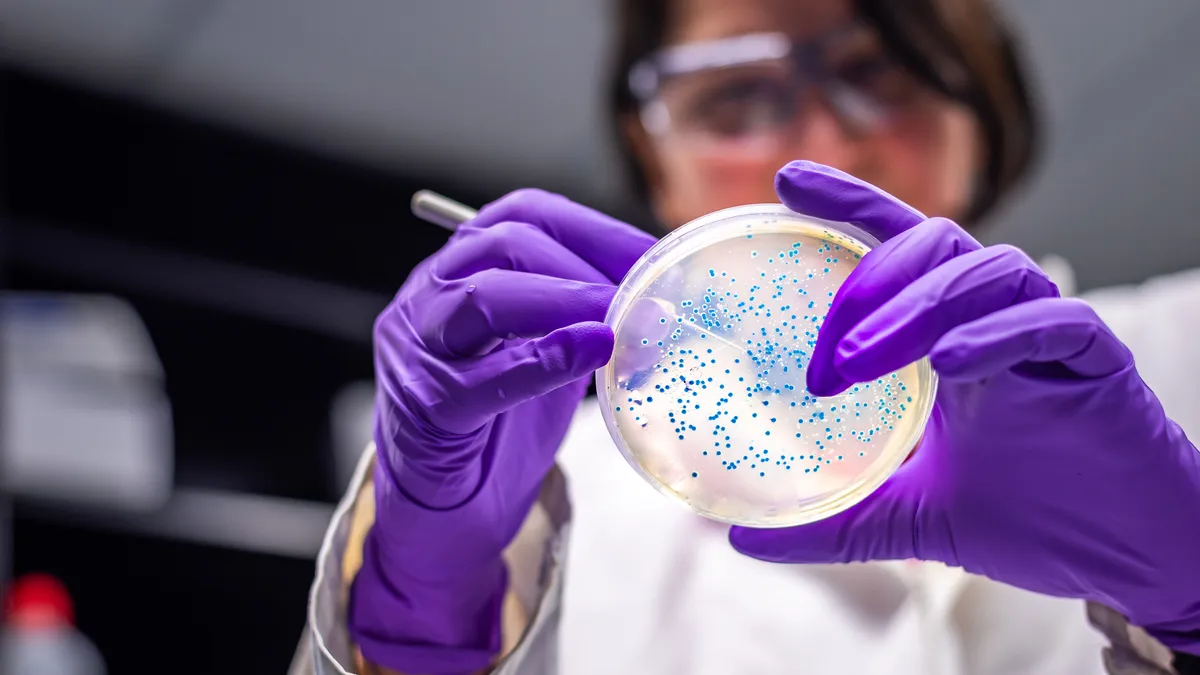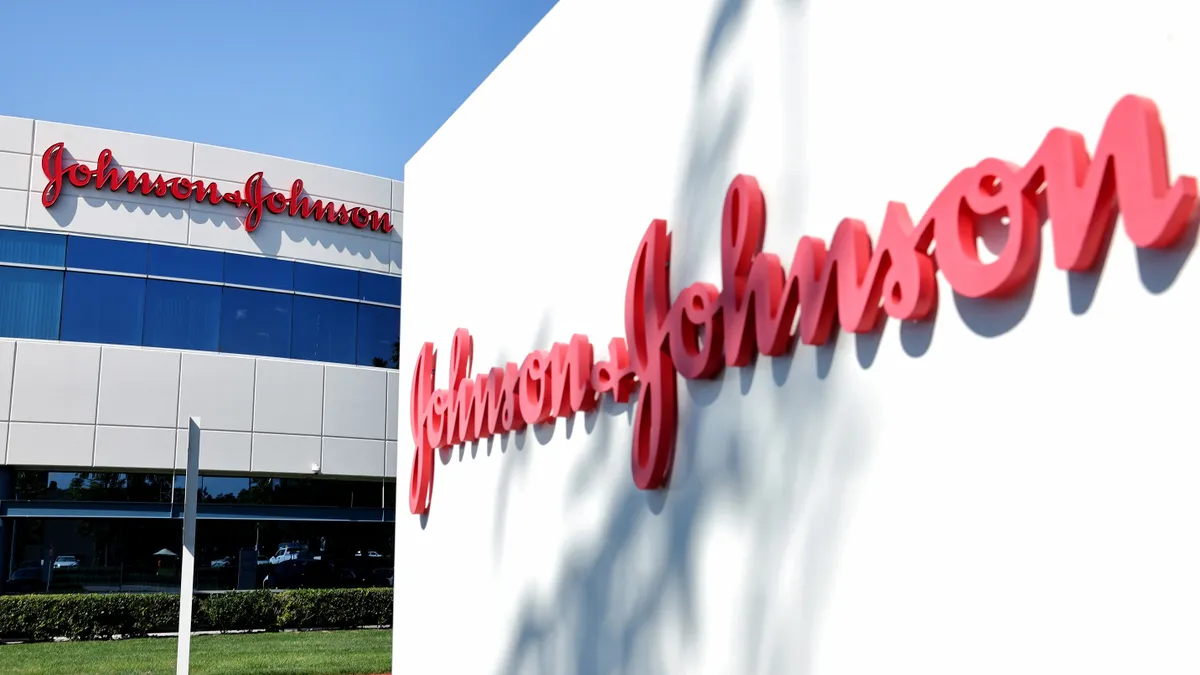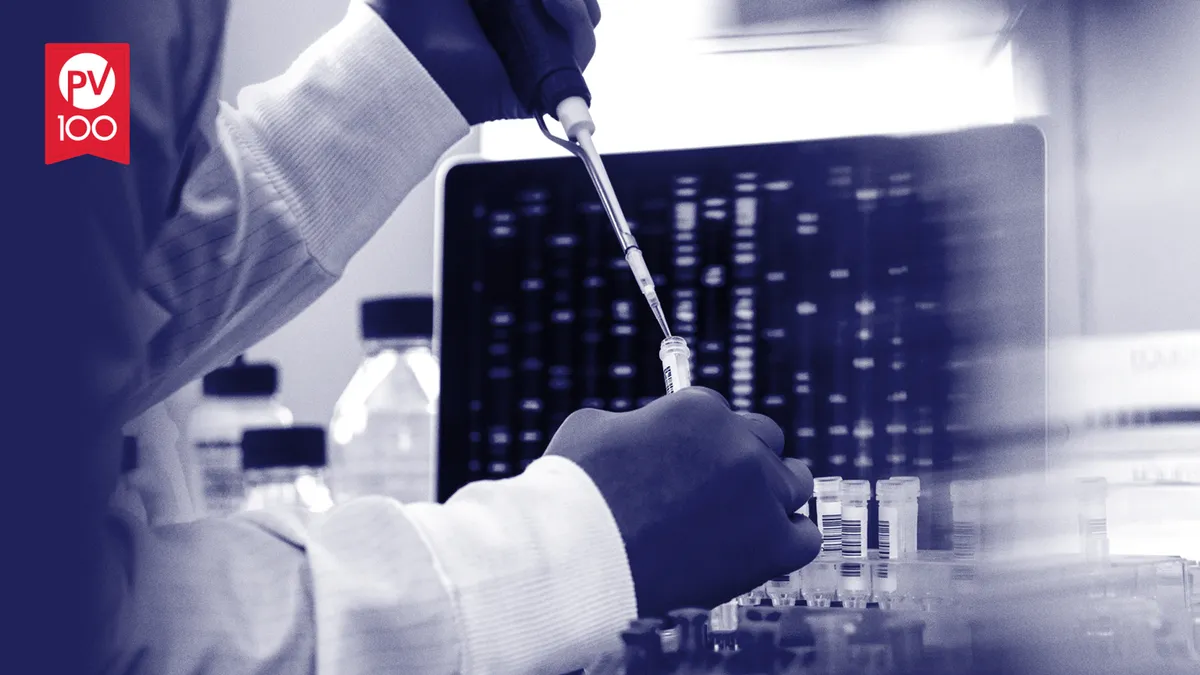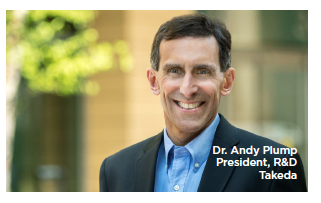 Timing in life is everything, and for Andy Plump, M.D., Ph.D., taking on the role as president of R&D at Takeda in 2015 has proven to be advantageous not only for the 239-year-old company at a time when it needed a fresh approach, but also for patients around the globe.
Timing in life is everything, and for Andy Plump, M.D., Ph.D., taking on the role as president of R&D at Takeda in 2015 has proven to be advantageous not only for the 239-year-old company at a time when it needed a fresh approach, but also for patients around the globe.
Back in 2014, Andy was approached by Christophe Weber, president and CEO of Takeda, to head up the R&D organization. The thing was, Andy wasn’t looking for a new job. He had recently taken on a new research role at Sanofi. “It wasn’t until after the third call from Christophe’s team that I began to engage in discussions," he says. “It was like one of those candles that wouldn’t burn out. I kept getting that next phone call, and that next phone call, and finally I thought it must be fate."
Andy was already an admirer of Christophe as the architect of what would be an amazing turnaround of the iconic company. After their first video phone call, it was clear the two were aligned on vision, strategy, and operational goals.
“Christophe asked me how I would build an R&D organization if I could build one from scratch, and what was remarkable was how in sync we were, which of course is a big part of the success that we’ve had over the last five or so years," Andy says. “We have had a connection right from the start."
Takeda is a patient-driven, science-first R&D organization that focuses on core therapeutic areas — oncology, rare genetic diseases, neuroscience, and gastroenterology — with cutting-edge technologies.
Currently, Takeda invests approximately $4.5 billion in R&D a year, with more than 50% of its pipeline of 40 molecular entities targeting orphan indications. The company also boasts an impressive diversity of modalities, ranging from small molecules to antibody therapeutics, peptide and oligonucleotide and microbiome-based therapeutics and targeted NK-cell and T-cell based therapies. In addition, the company has more than 200 active partnerships.
Since Andy joined Takeda, the company’s success has been significant. Late in 2019, Takeda expected that its 14 current global growth brands would generate significant momentum enabled by at least 20 additional indications and major market expansions through fiscal year 2024. In the same time period, the organization anticipates delivering 12 new molecular entities with the potential for launch in 14 indications, representing best-in-class or first-in-class therapies across its core areas of focus.
This extraordinary momentum is based on Andy’s solid vision of what an R&D organization should and could look like, which starts with patients and works to ensure that great science follows.
PharmaVOICE: How did you approach the transformation of Takeda’s R&D organization?
Plump: I came in with my vision of what an R&D organization could look like and I was all ready to hit the ground running. The first thing that Christophe asked me to do, which was probably the most sage advice I’ve received ever in my career, was to just pause and not do anything. My predecessor was a real iconic leader — Tachi Yamada, chief medical and scientific officer — and had been at the company for just a few years. Christophe had Tachi maintain the operational control of the role when I started and he asked me to just listen. I spent three months going around to all of our sites. I met all of our leaders and as many of our R&D employees as I could — literally thousands of people. I listened to what everybody had to say and learned about our programs, our culture, what we did well, what we didn’t do well. For the first two or three weeks, I felt like I was in a straitjacket because I wanted to do, and do, and do. But having that opportunity to just pause, reflect, and listen allowed me to refine some of the ideas and thoughts I had, which allowed me to tailor-fit a strategy to what Takeda was.
This was in February, and after spending three or so months listening and learning, by summer, the leadership team was ready to think through what we needed to do.
The good news and bad news at that time was that firstly, Takeda is an incredible organization, 239 years old. Most governments don’t live as long as Takeda has been around. There are very few companies among the hundreds of millions of companies that exist in the world that have the kind of history that we have. You would have to look to some religious institutions and a few universities that rival us in terms of our longevity. Christophe and the leadership team have elevated this amazing and rich history and strong value system even further — it’s a really good organization in terms of its scientific strength. In Japan, for example, Takeda is revered as an institution focused on science and the company is able to recruit, by far and away, the top scientists in the country.
So we had lots of good things going for us, but we were challenged. We had lost our way. Our productivity was horrendous. After a great deal of retrospective analyses of our R&D productivity, which is always a difficult metric to measure because of the tremendous lag, we found that we were dismally behind. And not just our productivity, but also where we were in terms of cutting-edge healthcare technology and the transformation that was happening across our industry. We were 10 years behind.
And our organization, from a cultural standpoint and from a geographical standpoint, was very fragmented. We were slow and very bureaucratic; we had really good people who were trapped in many ways. We had been built by the aggregation of four separate companies. There was legacy Takeda in Japan. We had TAP, which is the Takeda Abbott Pharmaceutical joint venture in Chicago. We had bought Millennium in Boston. And we had Nycomed in Switzerland. There was immense fragmentation across those four groups.
All these factors led together to an incredibly powerful case for change, which was again the good news and the bad news. The bad news of course was that we had a long way to go. The good news was that the rationale for driving change was so immense that with Christophe and our board, we were able to sponsor and drive a transformation, which — in the absence of a merger and acquisition or a major financial change — is just unheard of. The profound alignment across the board was the key driver.
PharmaVOICE: How did you start to put the pieces together?
Plump: We started to build a strategy, and then we created structural changes to match the needs of that strategy, which was predicated on four principles.
The first was on creating therapeutic areas of focus, which was a huge change for us. We had been a small-molecule chemistry company. When I joined, 90% of what we did was in small-molecule chemistry and we were not focused in any therapeutic area. We would take any small-molecule project and make a medicine to any disease that we could. In some ways, we were a hammer looking for a nail. So, we became therapeutically focused on four core areas.
The second piece was to become modality agnostic. To go vertically deeper in each of the identified therapeutic areas, we had to diversify our modality base, which meant adding the third piece — a partnership model. This piece has become seminal to our transformation.
Overlying all of this was the need to raise our innovation bar. We’re not making reformulations of existing products. We don’t want to build on existing standards of care. We are focused on diseases that have a massive unmet medical need with the goal of bringing forward medicines that have transformative potential for patients.
The last piece was building a culture and environment that could enable the audacious strategy that we were building. Of all the changes that we’ve made — and we’ve made immense changes — by far and away the hardest has been building out the environment and the culture to enable the strategic transformation.
PharmaVOICE: What is the unifying piece that brings Japan, Chicago, Boston, Switzerland — your global community — together?
Plump: Patients. Isn’t it ironic that in an industry that focuses on developing medicine, helping humankind, and driving better health that it’s only recently that we started to focus on the patient? When I started in the business, the thing we would debate was who is our customer. Is our customer the commercial organization? Is it the payers? Is it the physicians? Is it regulators?
Today, we serve only one individual and that’s the patient. Ultimately, we are always focused on our mission of doing the right thing for patients. I know this sounds very generic, but by starting with patients when we began to peel back what it takes to make this a reality, we realized it meant empowerment. This led to a focused strategy and within the confines of that strategy we let some people go, we didn’t force bureaucracies that slowed people down, and we federated and decentralized operations as much as possible.
We adapted a strategy and an operating model that’s very team-centric, which means we don’t run our organizations through functions. We run our organizations through the therapeutic areas, and then, specifically the teams exist within those therapeutic areas.
The teams know they’re free to work within their areas and this type of freedom to experiment and to iterate is so important.By creating a decentralized model, we have the advantage of being much more agile, more fit for purpose. Every team decides where and how they need to progress, what adjacencies they need to support their programs.
We recognize that we are a global organization and we represent patients throughout the world. At the same time, we recognize that to be most effective, the more we can be together physically, the better off we are. A big part of our model when we started was to consolidate the major pieces in Boston.
Today, about two-thirds of our R&D organization is physically in the Boston area. This is quite dramatic considering where we were in the past. When I joined the company, about 10% to 15% of our R&D organization was in Boston, so this has been a dramatic change for our organization. We still have important labs in San Diego and in Tokyo. And we have regional development centers in Japan, China, and Europe. We’ve tried to create a very open culture where there is a fluidity of knowledge sharing and also recognize that we look at ourselves as the nucleus of a network of partnerships.
PharmaVOICE: Why is this partnership model so important to your success?
Plump: When we look at the medicines that find their way to patients, two-thirds to three-quarters of those medicines originate outside of the laboratories of large pharmaceutical companies. They originate mostly in biotech companies as well as academic institutions. So most of our success will start outside of our walls. And you know what? This is a statistic that everybody knows and so few are able to embrace. There are immense forces that prevent large companies from embracing partnership. What are those forces?
The first is the not-invented-here syndrome. Scientists have pride in what they do and they want to discover the next medicine.
The second is the perception of value. Companies like it when they develop their own medicines out of their own laboratories because then they own 100% of the future profits.
The third is a fear of giving something away — by empowering another company to be successful you may lose something.
These are all entirely misled theories. It doesn’t matter who invents or who discovers a drug. In fact, as a scientist, what I want most is to be part of a successful experiment. I want to be part of a successful medicine and it doesn’t matter if it’s my idea or someone else’s idea. We can work together to enhance the value and the potential of that idea.
When we enter into partnerships, our primary goal is to make our partner better because as soon as our partner wins, we win.
PharmaVOICE: What does the future hold for Takeda?
Plump: We have a great organization. We have amazing people. We’re able to attract a consistently high level of talent today that we couldn’t when I first got here five years ago because we have an organization that has such a strong values system, such a good reputation. This is what’s going to drive us over the next five years. We’re going to start to see a pipeline that I think has the potential to be the best in the industry. And the transformative medicines that we’ll be launching will be because of our people, our culture, and our willingness to work in a productive way with our partners. n



